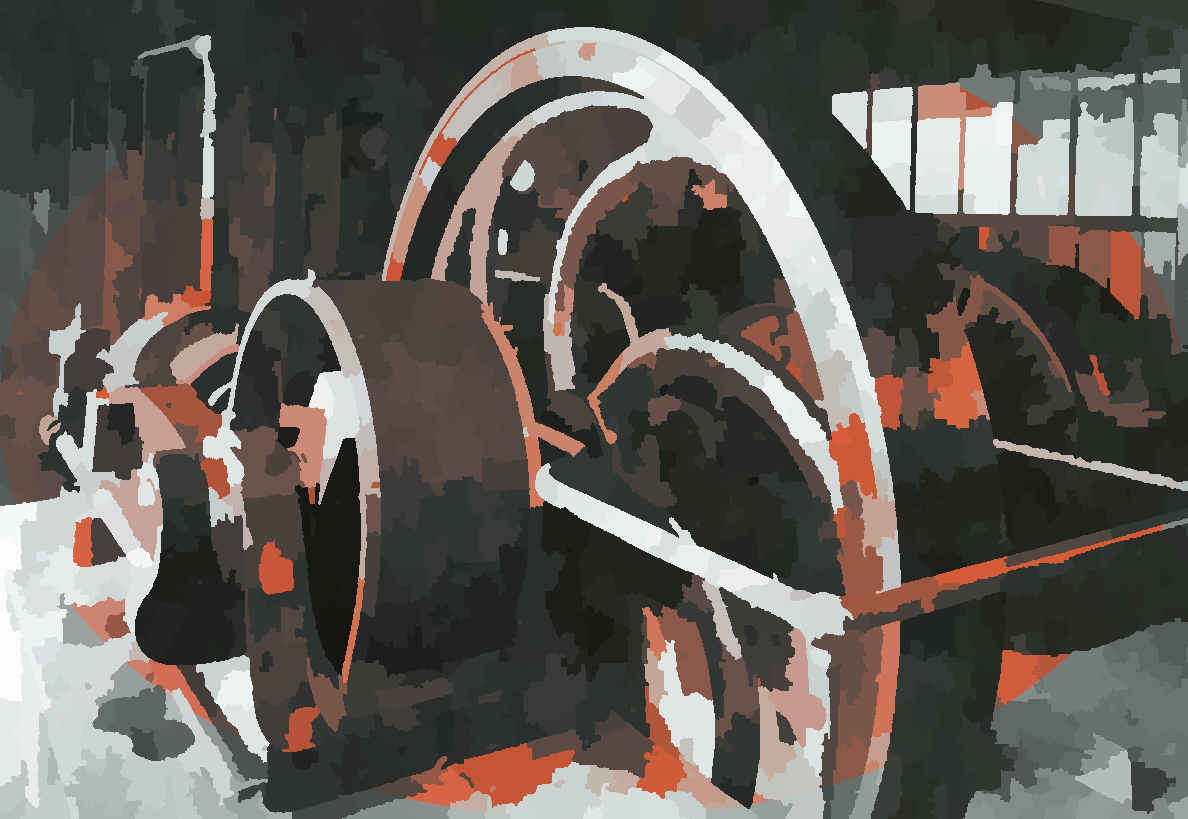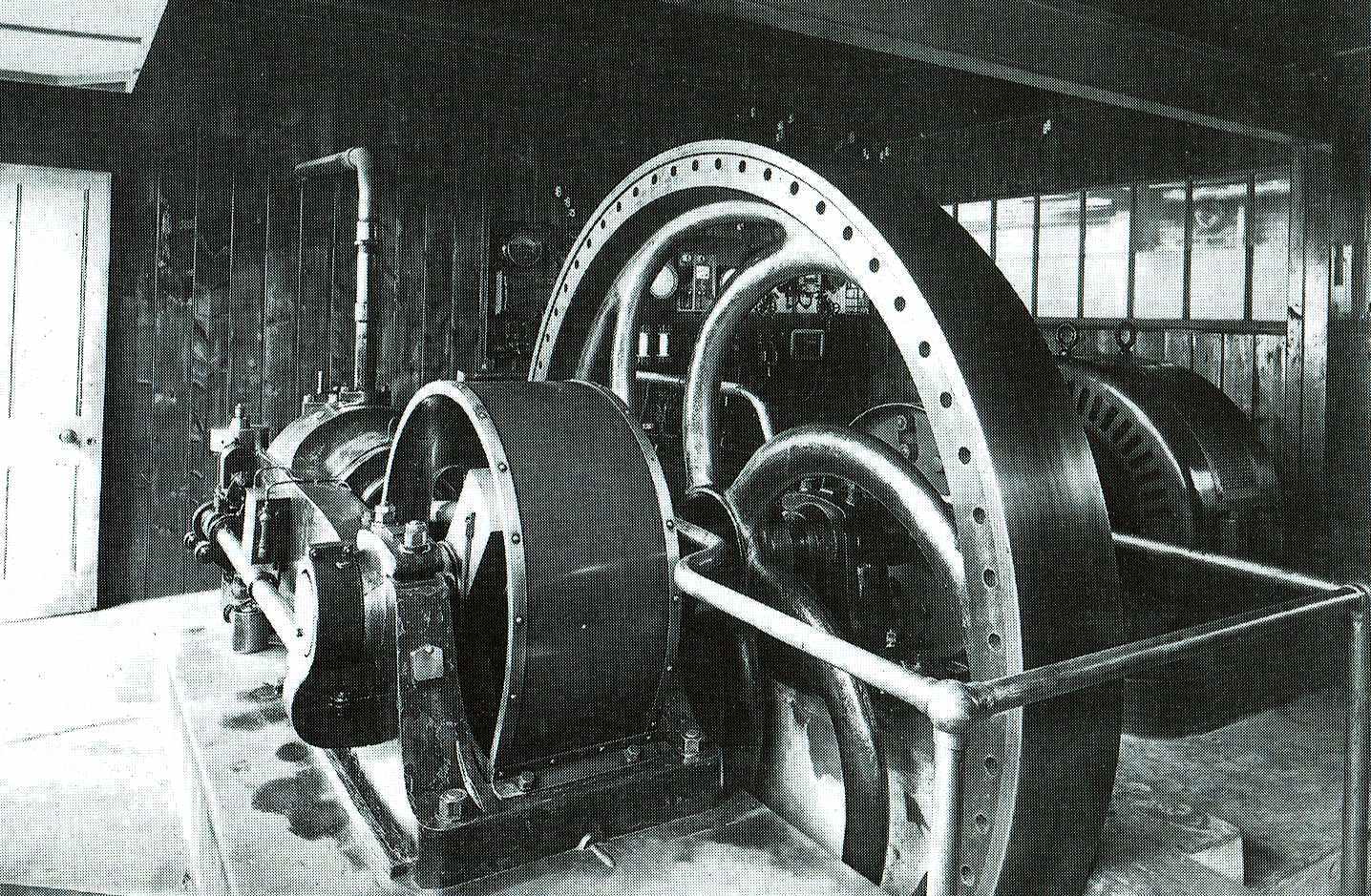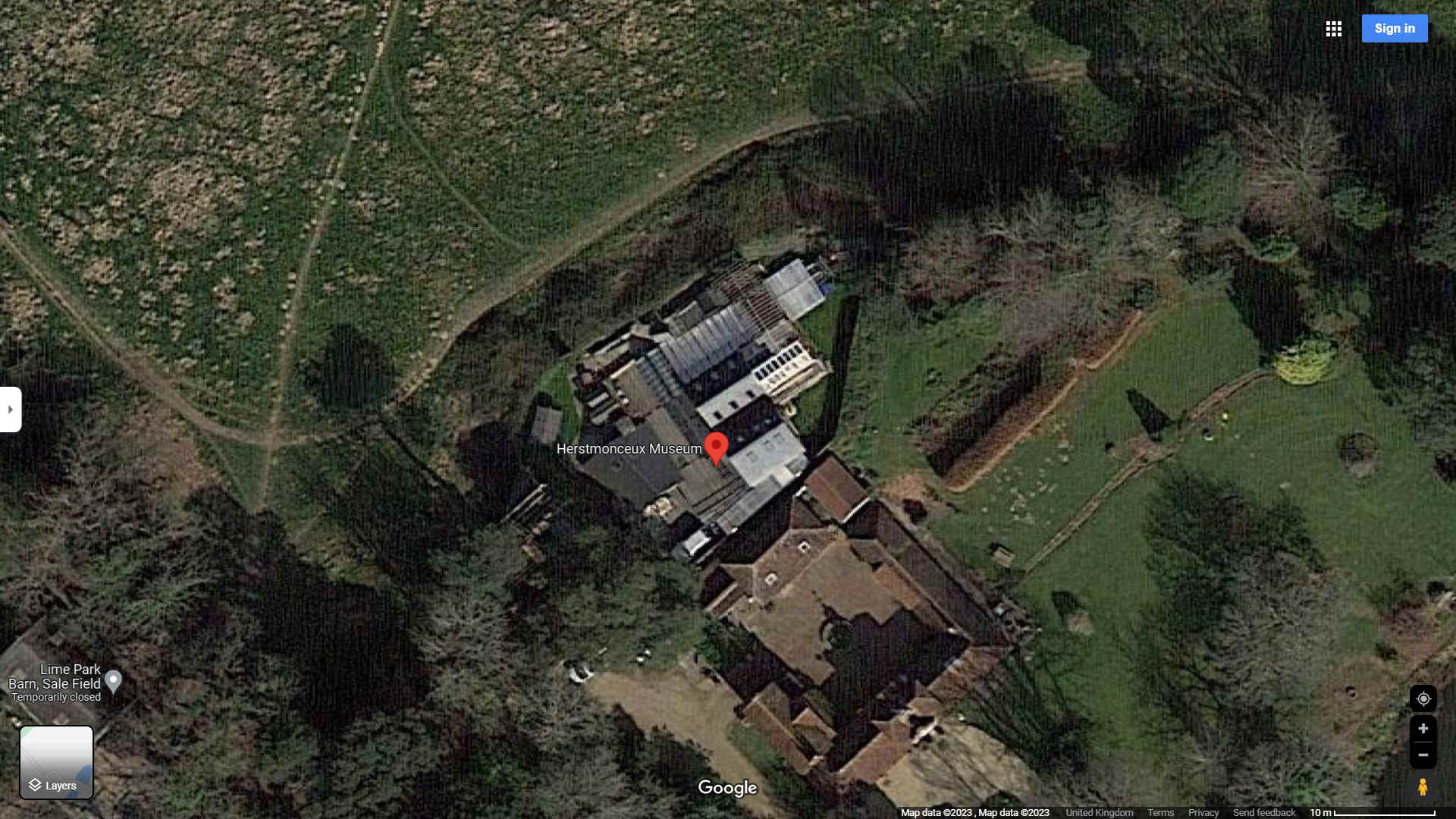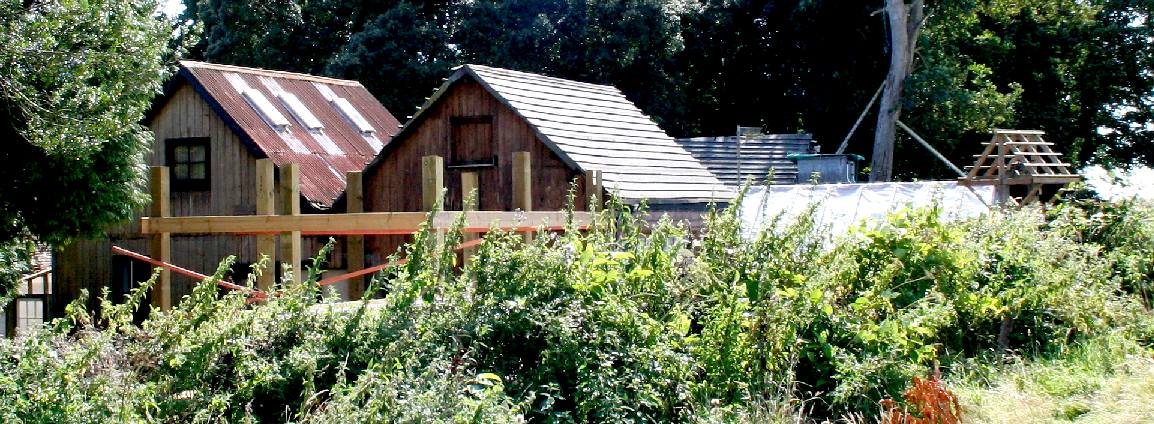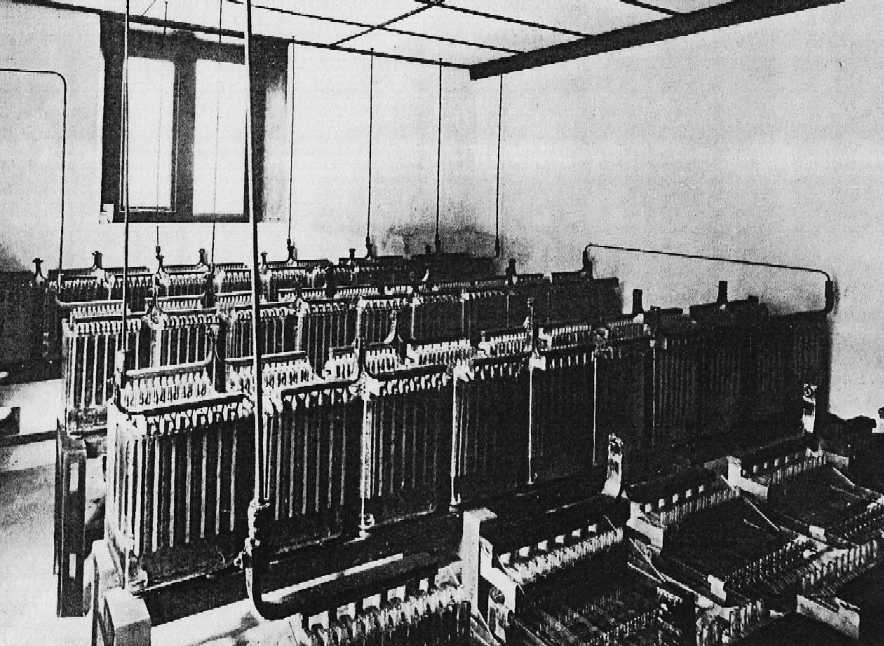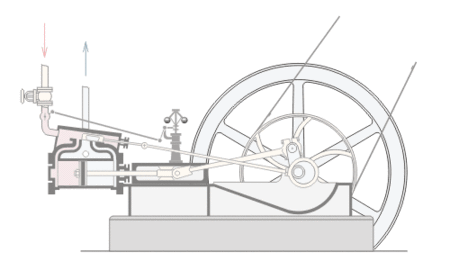|
HERITAGE, DISCOVERY |
1ST & LAST |
|||||||||||||||||||||||||||||||||||||||||||||||||||||||||||||||||||||||||||||||||||||||||||||||||||
|
EXHIBITS FRIENDS HERITAGE HOME LIME PARK OPEN DAYS PARKING TECHNOLOGY |
||||||||||||||||||||||||||||||||||||||||||||||||||||||||||||||||||||||||||||||||||||||||||||||||||||
|
It was either fated, or the most incredible set of coincidences, that brought the Generating Station's savoir together. For sure, without him, the proud new owners in 1981, had it in mind to demolish what they saw as a liability. That was until he was running short of change, and wanted to secure the skills of his best decorator & handyman.
You might agree that true life stories are stranger than fiction. This is one of those chronicles. We will never look at the Eiffel Tower the same again, contemplating how some monuments become preserved for posterity. How they have survived. Take, the Eiffel Tower as an example. A temporary structure, that has become synonymous with Paris and France. Tourists make a bee line for the famous Tower, a must see. Was it preordained to survive, by some divine vision of the future. Or was it just down to luck. Typically, there is a champion or two behind the scenes, with some kind of dogged persistence that drives heritage crusaders.
In the case of industrial archaeology, redundant technology is mostly swept aside by commercial considerations, as brown-field sites are typically swiftly redeveloped to earn their owners a few more shillings. Nobody really cares, or even recognises the value of recent advances. It's all to close in time, hence, cannot be of value. Not like Stonehenge, the Pyramids, or Great Wall of China.
For sure an insignificant wooden building in the corner of a country estate of little note, is unlikely to survive two world wars, woodworm, wet and dry rot, and worst of all; property developers.
On the passing of Baron von Roemer between 1917-1918 in the Great War, Lime Park passed to his good wife, Baroness (Lady) von Roemer, with Major Charles de Roemer, of Eastbourne Aviation Company fame, continuing to operate his electricity supply company at arm's length from his London home, in Wimbledon. The Baroness passed in 1951, when Lime Park became divided into smaller parcels and sold off, the proceeds being divided between siblings. Wickens Estates Limited came into the frame, presumably on the passing of Major de Roemer, to further subdivide, but Wicken's seem to have overlooked the generating emporium, being more of a liability, nestled out of sight behind the old stables and garages, renamed 'The Old Rectory,' possibly with one eye on later development. Instead of that, and with flora encroaching and no obvious use springing to mind, nature slowly took its course. And the buildings were consigned to the earth, left to rot.
But, on very rare occasions, archaeological remains are discovered by the most incredible stokes of luck. Or, might that be destiny? Whether fate or no, we will leave for you to decide. Remembering that technology advances at a frightening pace.
Thus it was, that during the long dry summer of 1981, a handyman was seconded to help Nikolia and Clare Askaroff, refurbish their proudest acquisition in Lime Park, Number 4, destined to become a heritage champion. How it was this couple came upon number four, is not known. But we do know that Clare was a fine artist, in water-colours, and relished living the dream of a bygone era, the subject of much of her art. We also know that 'Nick,' as he preferred to be called, was looking for a spacious house in which to raise a family, and most of all to please his spouse. He also loved a bargain. Clare, was more into architecture meeting her historic ideal. And number four had a large garden and views across the Pevensey Levels, to Eastbourne, where her father, Douglas Martin, lived and practiced as a dentist. it was conveniently distanced.
The handyman, was working for Nick's mother, Rosemarie Askaroff, at her nursery supply business. He was friends with Alexander Askaroff, Nick's younger brother. Alex and Vic both attended Ratton Secondary School, and later the Eastbourne College of Further Education, studying engineering. Rosemarie had eloped with Igor Askaroff, a Russian asylum seeker, after they met in Austria when she was just thirteen years of age. Moving from London to Eastbourne, Igor first worked as a dustman to support his family, while Rosemarie was an industrious seamstress, making ends meet by stitching clothes for her six children. Igor and Rosemarie founded Simplantex in Eastbourne with funding from Stuart J Twentyman-Turnbull, to make shower-proof buggy capes, that proved to be popular among the mothers Rosemarie met during school runs, and for invalid carriages. Their children's accessory business took off from there.
An aerial view of Herstmonceux Museum in 2022, showing the public footpaths north of the generating buildings. Many of which are unregistered, but well trodden for over forty years, from our records.
Our handyman, Victor, was only brought into Lime Park, as muscle to begin with. Just to help clear number four, filling many skips with junk in the process. But Clare had taken a shine to his carpentry skills and gloss painting, at Simplantex, where she worked designing patterns from their latest Beatrix Potter range of nursery products. Victor was asked to quote for decorating a room in her new acquisition, that included hanging fine wall and ceiling papers.
This turned out to be one of Victor's fortes. Clare was fond of pale, patterned wallpaper that is difficult to hang without marking. And papering ceilings is something of an art, balanced on trestles and scaffold planks, working upside down, and hoping the heavy embossed paper would not succumb to gravity, and peel off, just as you get past the half way point. Try it for yourself, and see. Since the ceilings were quite tall, this was not for the feint hearted, but ideal work for tightrope walkers, who'd fathomed how to mix wallpaper paste, to ensure good adhesion. No surprise then, that Victor was later to set a local tree climbing, speed record at five seconds. A small oak mind, not a classical giant. Nevertheless, a sprightly performance.
Having mastered sticking paper to ceilings in ordered fashion, Victor was asked to decorate more rooms, in between building partitions and fabricating steel work stations for their factory off Seaside Road in Eastbourne. His versatility was beginning to show. Nick was the Managing Director at Simplantex. He was a qualified, chartered accountant and adept at cementing commercial deals. He also had a side line, buying small houses and bungalows in need of some TLC, with his friend Kim Palmer. Thus, Aslap Investments was born.
FATE
One lunchtime, Victor took a wander around the Park, spotting the forlorn, and completely overgrow sheds in the northern corner, while on his way up to Herstmonceux village for a steak pie. Curiosity got the better of him, drawn to the partly collapsed buildings, leaning over rather dangerously and somewhat spooky. Undeterred, Victor entered the sheds, determined to explore, being careful not to lean on any of the internal partitions, that had rotted away at the base, and were just hanging, precariously. The roof was peppered with rust holes, and the corrugated iron cladding, was overgrown with brambles and ivy, of some ten to thirty years unattended growth. A courtyard to the rear was not recognisable as a courtyard at all, where the retaining walls had given way, and the surrounding earth, filled the void. Sycamore trees were growing inside, through and on top of the roof of a lean to, that turned out to be a faggot store, according to Augustus Hare and local gardener, Ronald Saunders. Faggots being thin branches, dried to make fire.
It transpired that these sheds belonged to Nick and Clare, bought as a job lot with number four, to clear, and another chore to take care of when all the refurbishments of their new home were complete. When asked what he intended for the sheds, Nick just shrugged. "We'll have to demolish, more than likely. It would cost too much to repair." He went on to reveal, that is what his new neighbours were of a mind. Hoping he might foot the bill.
Alarm bells began to ring. Victor was good friends with Alex Askaroff, from attending Eastbourne College of Further Education, together, where they studied for a BTech in engineering. Vic and Alex had bought a damaged vehicle together, in an abortive attempt to become car dealers, and almost turned to house renovation, before Alex started his sewing machine business: Sussex Sewing Machines. Alex was Nick's younger brother. He serviced all the machines at Simplantex, and for their outworkers, before one almighty bust up between the boys: Noel, Max, Simon and Oliver - and Nick of course. Noel was the eldest, Olly, the youngest.
The subject of the generating sheds came up between the friends. At that time nobody knowing what they were, except Victor, who realised immediately they were some kind of well thought out industrial building, from the large concrete mountings in the northernmost building. And Vic loved old industrial buildings, windmills, water mills and redundant factories; he was drawn to them, like a magnet to iron Including a fondness for the beachfront Martello Towers, of which, he almost bought one in 1980. Alex explained to his chum that Nick was mainly money driven and could not resist deal making. He also knew that Nick and Clare were somewhat over-extended, with conversion of number four costing more than originally intended.
The scene was set for a proposal. But would Nick bite?
Lead-acid batteries in banks, were mounted on glass insulators, in rooms like that above. The idea being to store large amounts of energy.
CHAPTERS
CHARACTERS
There were many other contributors. If you know of any information that may help us complete this story, please get in touch.
|
||||||||||||||||||||||||||||||||||||||||||||||||||||||||||||||||||||||||||||||||||||||||||||||||||||
|
|
||||||||||||||||||||||||||||||||||||||||||||||||||||||||||||||||||||||||||||||||||||||||||||||||||||
|
EXHIBITS FRIENDS HERITAGE HOME LIME PARK OPEN DAYS PARKING TECHNOLOGY UNESCO
Copyright © 2023 - 2024 Lime Park Heritage Trust. A not for profit organisation with charitable objects.
|
||||||||||||||||||||||||||||||||||||||||||||||||||||||||||||||||||||||||||||||||||||||||||||||||||||
